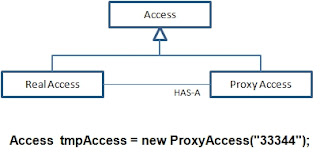Creational patterns
These patterns have to do with class instantiation. They can be further divided into class-creation patterns and object-creational patterns. While class-creation patterns use inheritance effectively in the instantiation process, object-creation patterns use delegation to get the job done.
- Abstract Factory groups object factories that have a common theme.
- Builder constructs complex objects by separating construction and representation.
- Factory Method creates objects without specifying the exact class to create.
- Prototype creates objects by cloning an existing object.
- Singleton restricts object creation for a class to only one instance.
- Multiton restricts object creation for a class to only one instance per given key.
[edit]Structural patterns
These concern class and object composition. They use inheritance to compose interfaces and define ways to compose objects to obtain new functionality.
- Adapter allows classes with incompatible interfaces to work together by wrapping its own interface around that of an already existing class.
- Bridge decouples an abstraction from its implementation so that the two can vary independently.
- Composite composes zero-or-more similar objects so that they can be manipulated as one object.
- Decorator dynamically adds/overrides behaviour in an existing method of an object.
- Facade provides a simplified interface to a large body of code.
- Flyweight reduces the cost of creating and manipulating a large number of similar objects.
- Proxy provides a placeholder for another object to control access, reduce cost, and reduce complexity.
[edit]Behavioral patterns
Most of these design patterns are specifically concerned with communication between objects.
- Chain of responsibility delegates commands to a chain of processing objects.
- Command creates objects which encapsulate actions and parameters.
- Interpreter implements a specialized language.
- Iterator accesses the elements of an object sequentially without exposing its underlying representation.
- Mediator allows loose coupling between classes by being the only class that has detailed knowledge of their methods.
- Memento provides the ability to restore an object to its previous state (undo).
- Observer is a publish/subscribe pattern which allows a number of observer objects to see an event.
- State allows an object to alter its behavior when its internal state changes.
- Strategy allows one of a family of algorithms to be selected on-the-fly at runtime.
- Template method defines the skeleton of an algorithm as an abstract class, allowing its subclasses to provide concrete behavior.
- Visitor separates an algorithm from an object structure by moving the hierarchy of methods into one object.


